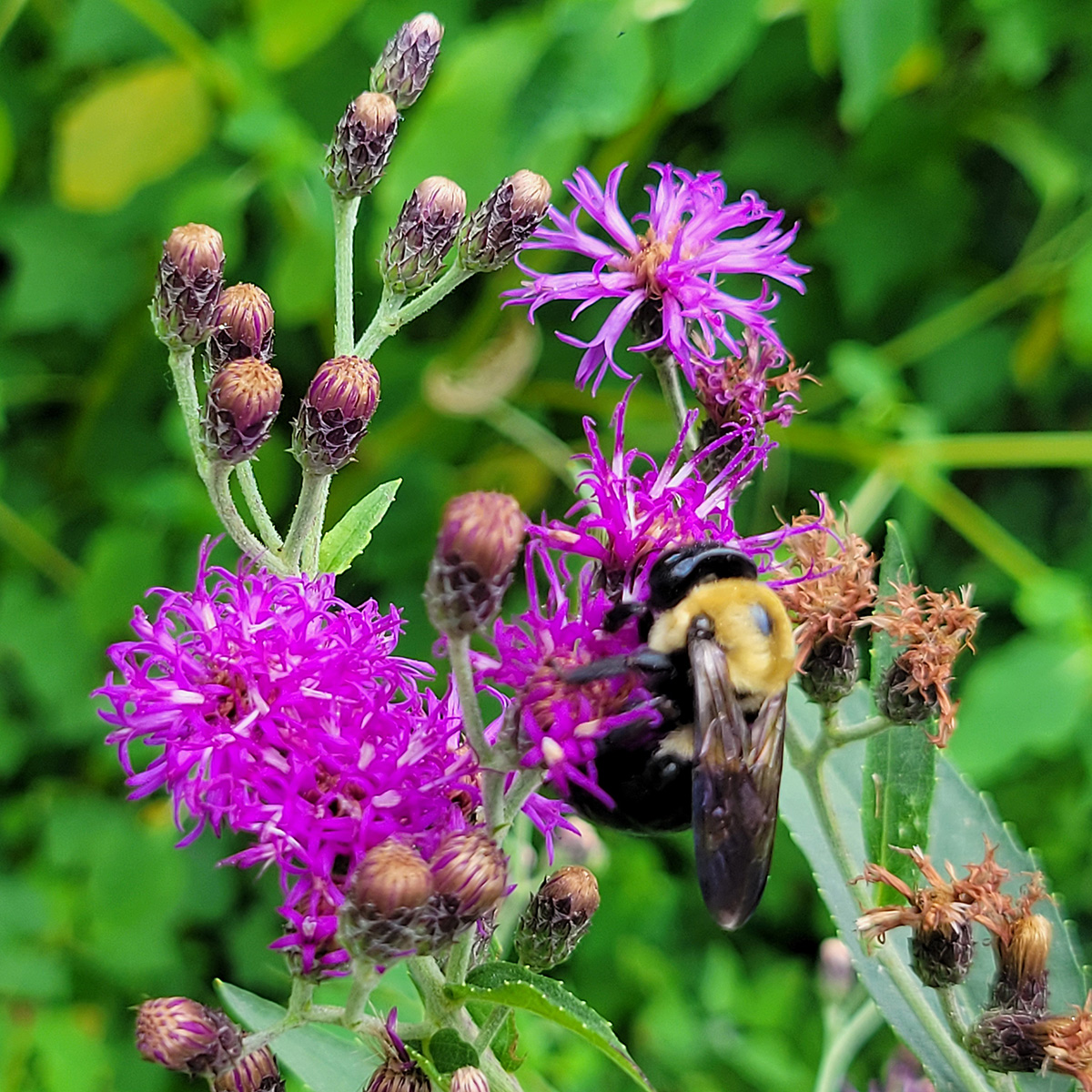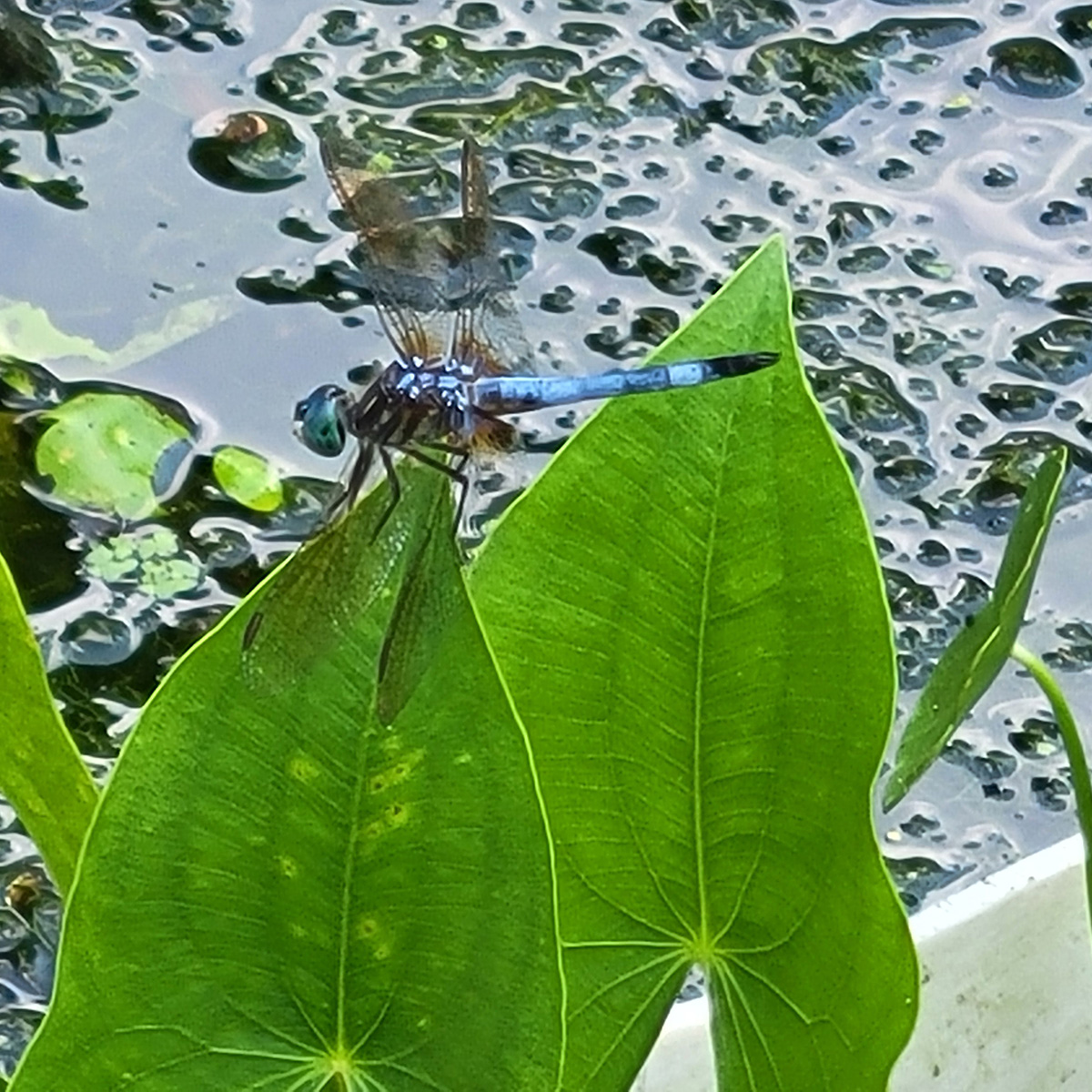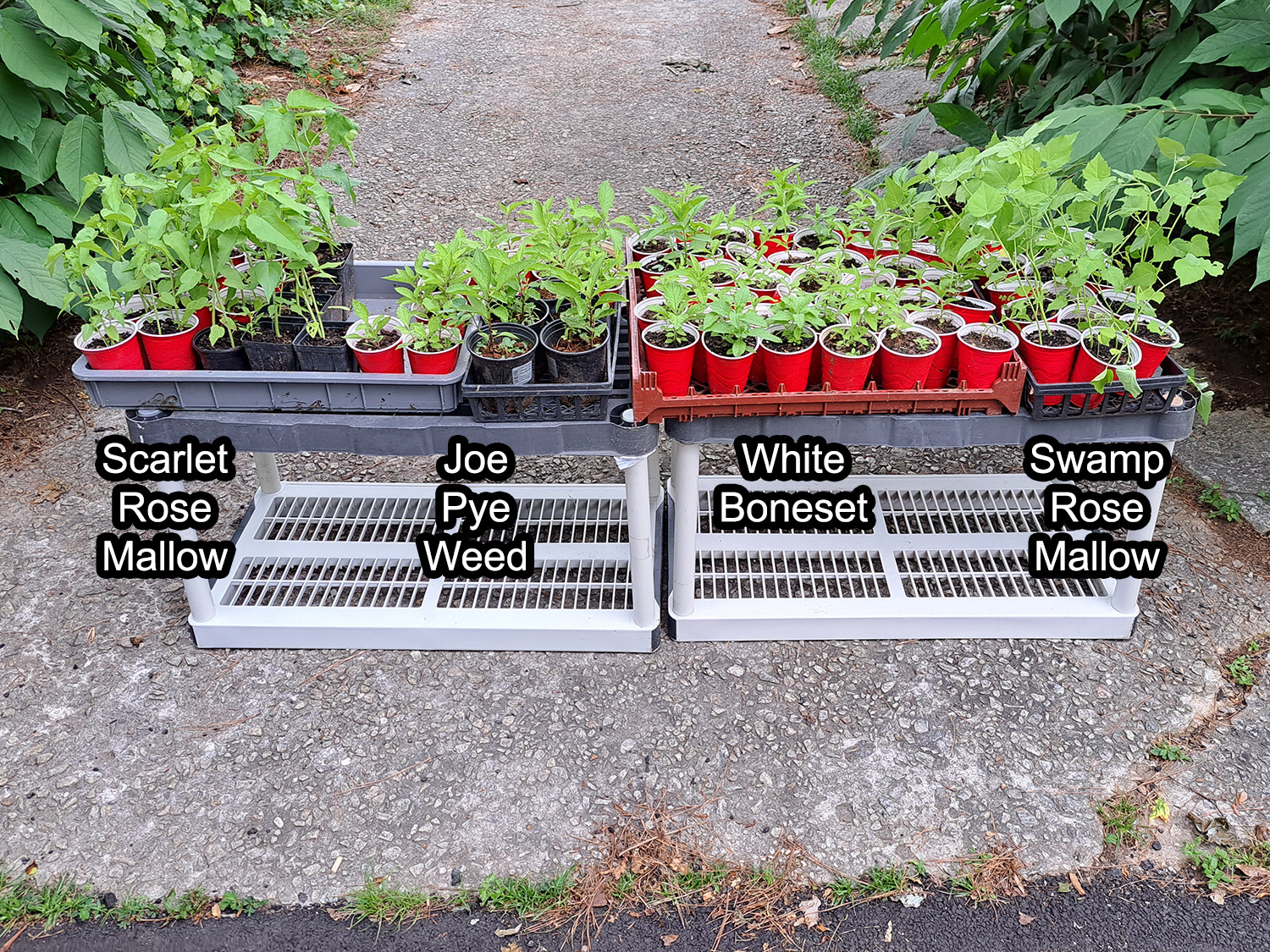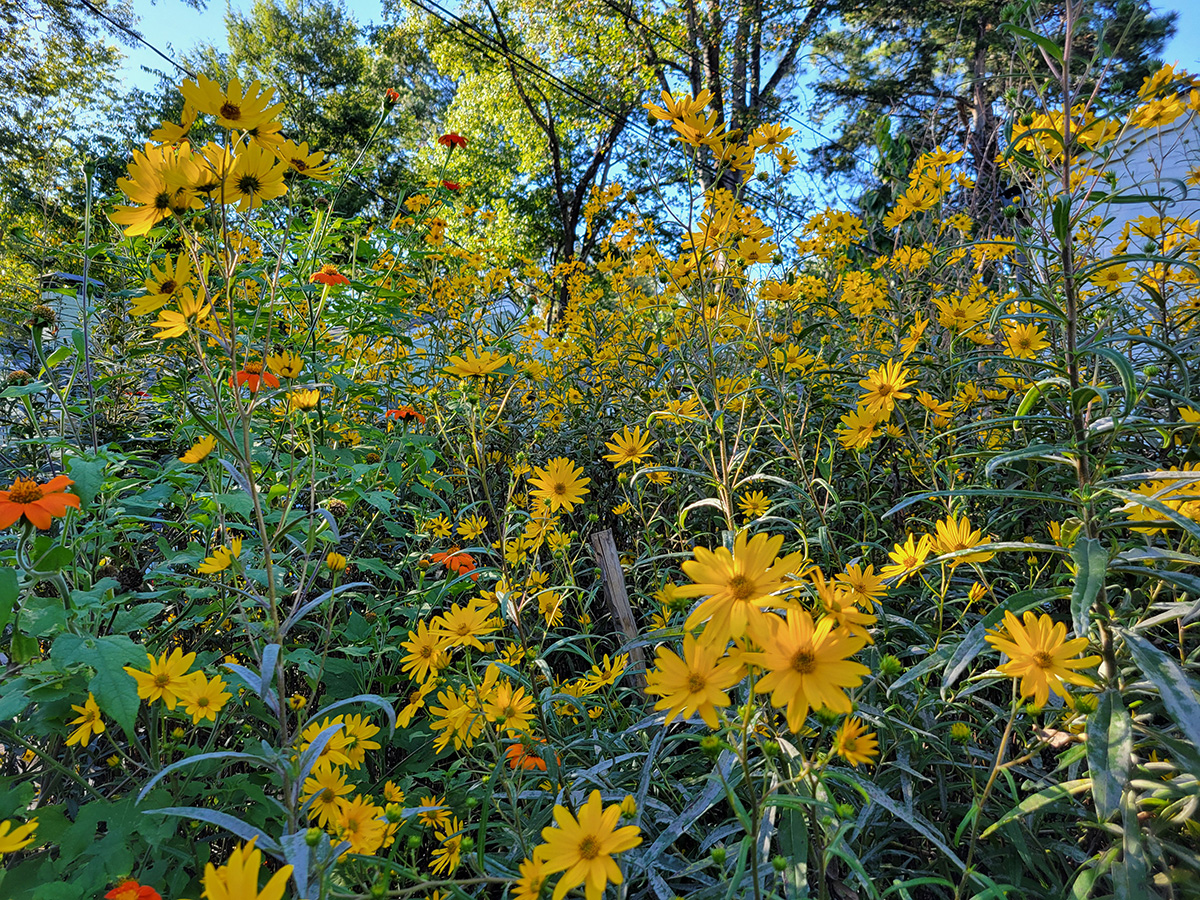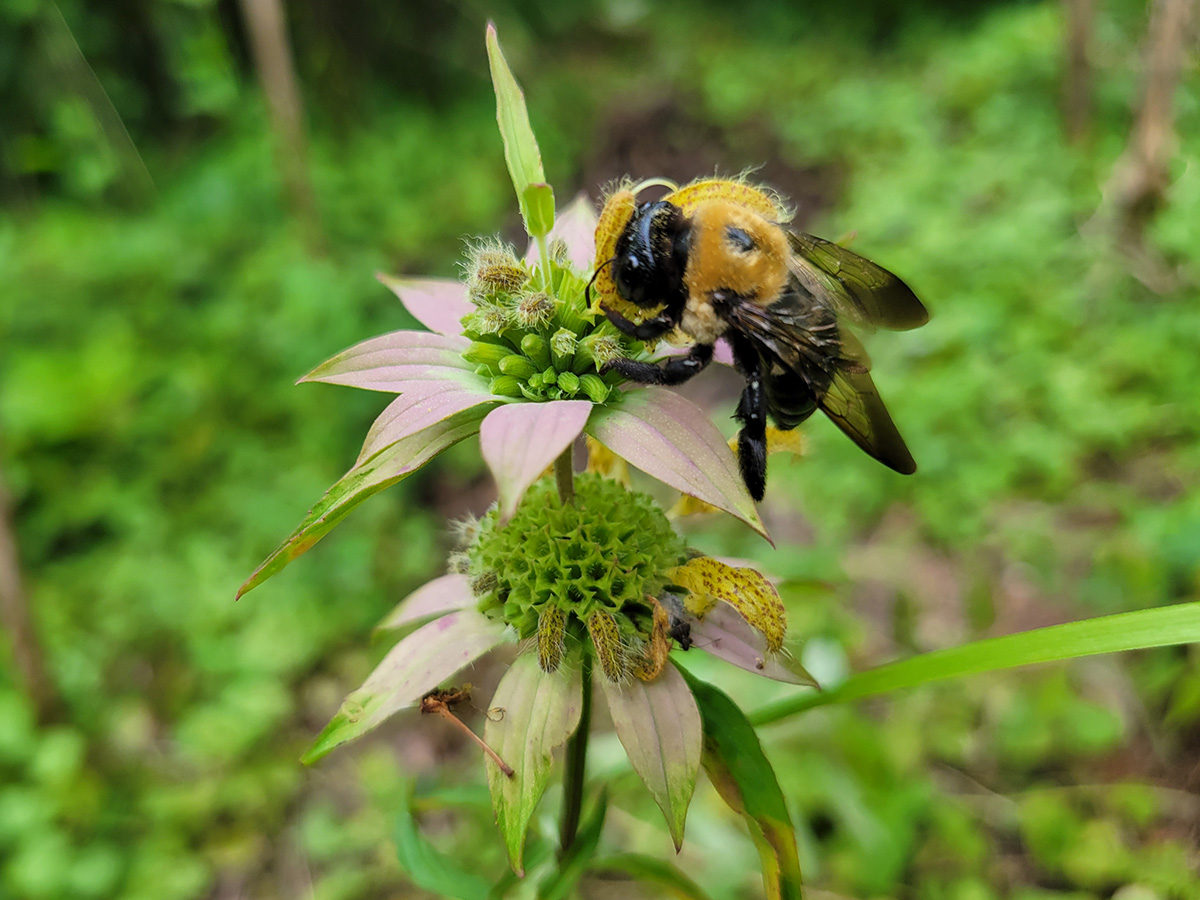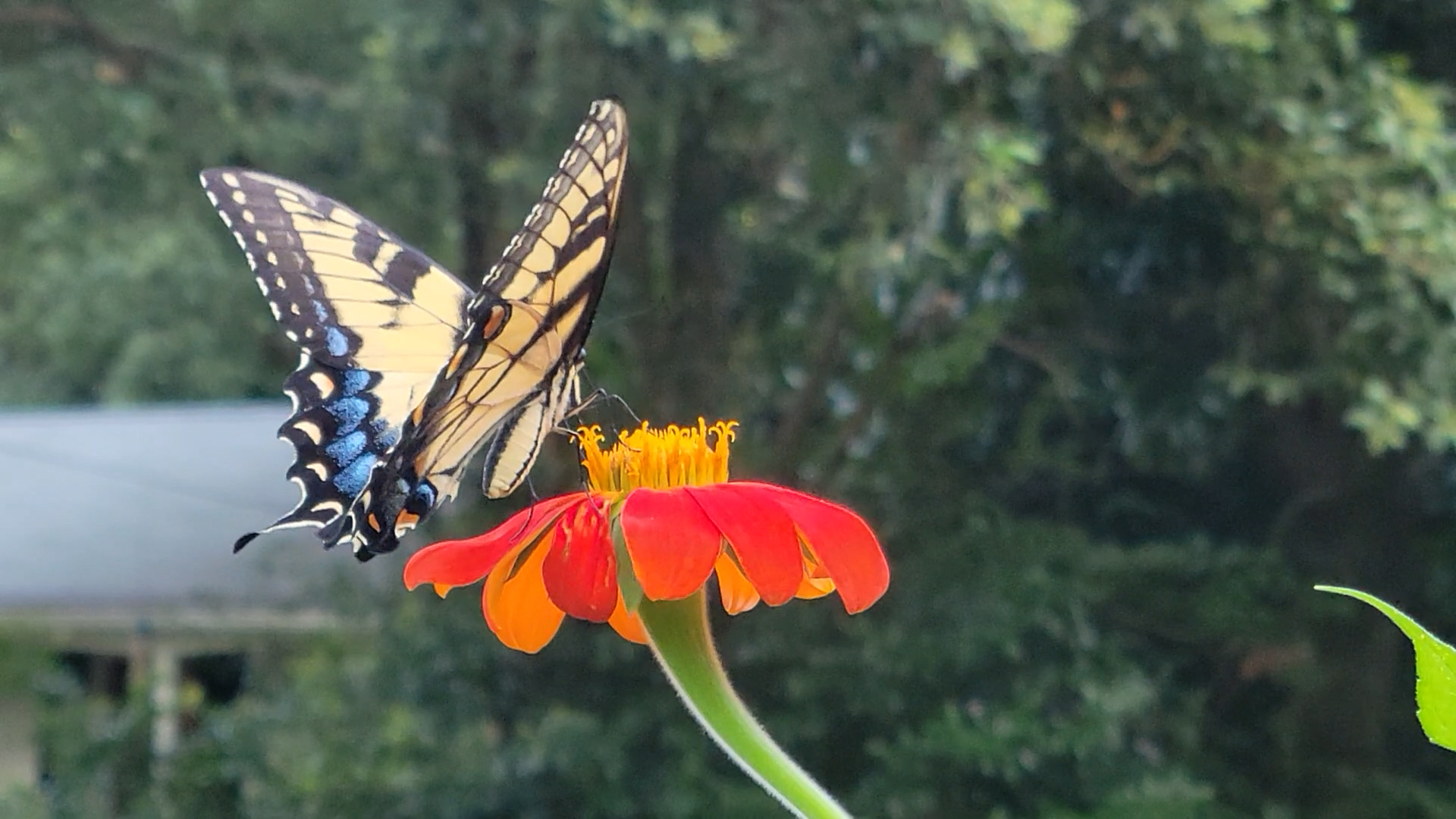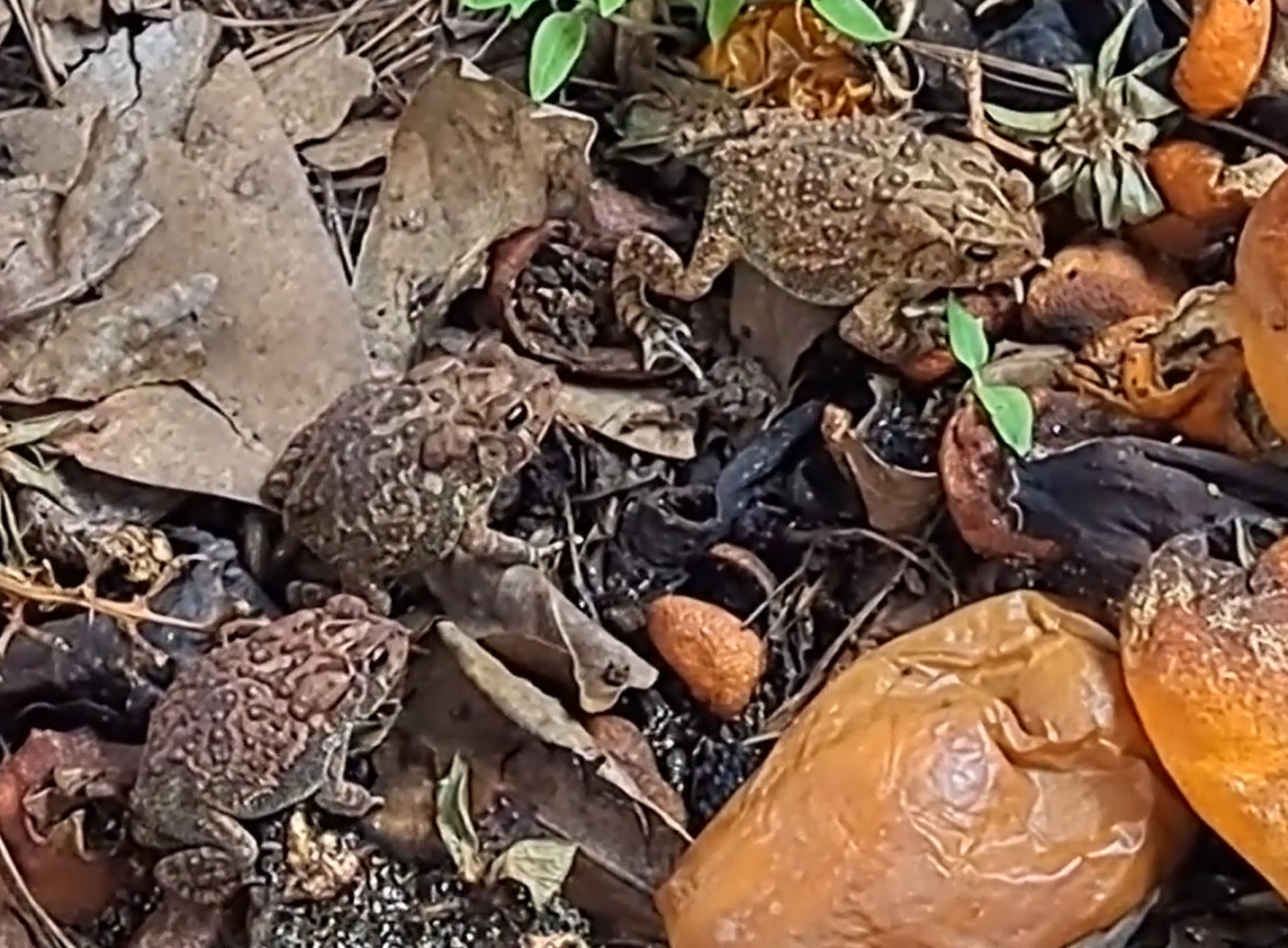It rained for many weeks in May and June, so often that most wildflower species in my yard grew as tall as they could, and some even delayed flowering.
Blue Dasher Dragonfly Population Explosion
The ponds and breeding tanks have been hosting a growing population of blue dasher dragonflies for years, but the previous two springs were dry with no rainfall for six to eight weeks. This year, it rained nearly every day for five or six weeks, and the population of blue dasher dragonflies has exploded.
Late Last Fall 2024
There were many Joro Spiders and Garden Spiders this year. Previous falls were favored by Golden Orb Spiders. Butterflies love tithonia (Mexican Sunflower). Many seeds were harvested this year, but many more were left for birds and for self seeding. Birds and butterflies migrating southward love wildflower gardens.
Native Seedling Give Away 2024
Last year in June and July, I was able to give away over 250 perennial wildflower seedlings to my neighbors in Medlock Park. I will be giving away more seedlings this year. These seedlings are native perennials chosen for their importance to butterflies and other pollinator insects. These plants not only feed the adults but… Continue reading Native Seedling Give Away 2024
Wildflower Meadow, Fall 2024
Monarch Butterflies There were afternoons in late September and early October when five or six Monarch butterflies would be in my small front yard plus about the same number of them in the back yard, also a small lot. The Monarchs appeared only for a week or two. They were migrating south ahead of the… Continue reading Wildflower Meadow, Fall 2024
Wildflower Meadow, Summer 2024
This year was productive in terms of seeds and pollinator insects in spite of five weeks without rain in May/June followed by over three weeks of rain in July. I suppose species diversity increased as in previous years, but what I notice most in an increase in population sizes.
Urban Ecological Oasis Videos, 2024
Each year, the number of native species that use my tiny urban pollinator meadow increases, with many beneficial insect species reproducing there or spending their entire life cycle there. All of these were filmed in my tiny yard (Yalobusha Farms) in August, 2024.
Native Pollinator Species Density and Diversity
I made a video of the flying insects that are drawn to the native wildflowers in my tiny back yard. The pink flower heads are joe pye weed, and the white flower clusters are white boneset (late boneset).
Tiny Baby Tree Frog Scratches Butt & Yawns
The tiny baby tree frog in the video has just swallowed a gnat. Swallowing the gnat made her poop. That is why she is scratching her butt with her hind leg. She is actually kicking away the feces. When she “yawns,” she is actually burping.
Southern Toads (A. terrestris) Eating Earthworms
I filmed a video of some of my breeder Southern Toads (A. terrestis) eating earthworms in one of the four open-top terrariums. Most of the diet (90%+) is fruit flies and fruit fly maggots that live on the pile of decomposing fruit peels in their terrariums.
